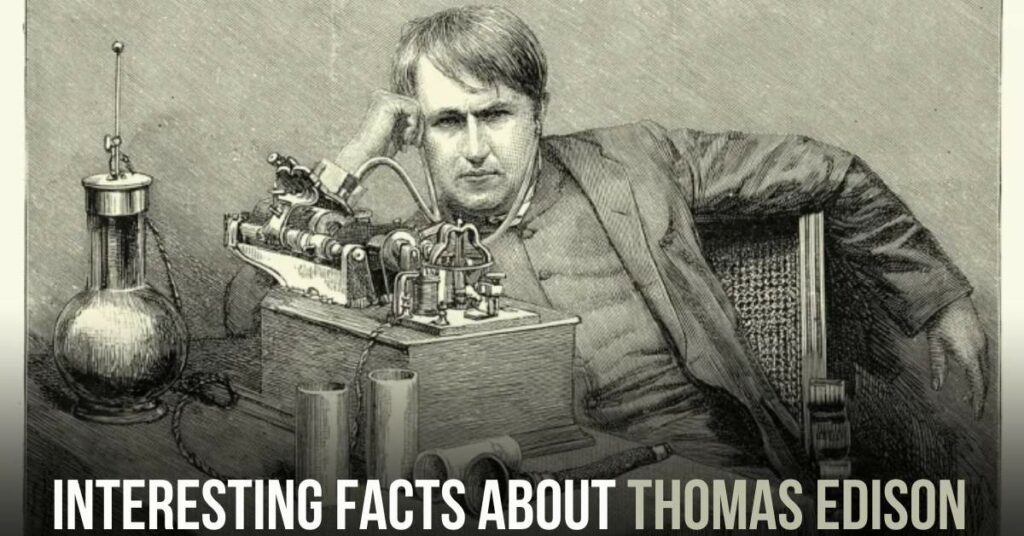Thomas Alva Edison, often dubbed the “Wizard of Menlo Park,” was one of the most prolific inventors in history. His relentless pursuit of innovation and numerous patents revolutionized the world as we know it. Beyond the light bulb and phonograph, Edison’s life is filled with captivating details and achievements.
In this article, we’ll explore 11 intriguing facts about the man behind some of the world’s most transformative inventions.
1. Two Marriages and a Tragic Loss
Edison’s romantic life was marked by two marriages. His first wife, Mary, married him when she was just 16 and he was 24. Tragically, she passed away at the tender age of 29, likely due to a brain tumor. Edison’s second marriage was to Mina, a 20-year-old, when he was 39. This union produced three children.
2. A Record-Breaking Inventor
Thomas Edison’s insatiable curiosity and inventive prowess led to an astonishing 1,093 patents awarded to him—a record-breaking achievement for a single individual. These patents encompassed a wide array of fields, from electrical engineering to communication.
3. His Middle Name: Alva
While he is often referred to as Thomas Edison, his middle name was Alva. Friends and family affectionately called him “Al.”
4. Telegraph-Inspired Nicknames for His Children
Edison’s early career was intertwined with the telegraph industry, which inspired him to give his first two children unique nicknames—Dot and Dash.
5. Dealing with Deafness
Edison’s battle with hearing loss began in his youth due to a case of scarlet fever. By adulthood, he was completely deaf in one ear and partially deaf in the other. Remarkably, he considered his deafness an advantage, believing it allowed him to concentrate on his work without auditory distractions.
6. Edison’s Notable Rivalry: Nikola Tesla
While both Edison and Nikola Tesla are celebrated inventors, they held differing views on electrical current. Edison championed direct current (DC), while Tesla believed in alternating current (AC). This disagreement led to a rivalry between the two inventors.
7. Thomas Edison: The “Father” of the Light Bulb
Edison’s most famous invention is undoubtedly the incandescent light bulb. While he wasn’t the first to create such a bulb, his design, patented in 1880, was practical and long-lasting—revolutionizing the way the world was illuminated.
8. Pioneering the Movie Industry
Edison wasn’t limited to just electrical inventions. He played a pivotal role in the early days of cinema, with his invention of the Kinetograph—a precursor to the modern movie camera. The Black Maria, his pioneering movie studio, produced some of the earliest films in history.
9. The Misadventure of Talking Dolls
Among Edison’s numerous experiments, talking dolls stand out as a quirky endeavor. These dolls contained tiny phonographs within their bodies, reciting nursery rhymes and songs. However, customers were often disappointed as the technology didn’t work well when miniaturized, leading to many complaints.
10. A Patented Vote-Counting Device
Edison’s inventive spirit was evident even in his youth. His very first patented invention, the Electrographic Vote-Recorder, aimed to streamline voting in American legislatures. However, politicians were reluctant to embrace this new technology, and the device was never widely adopted.
11. A Memento of Edison’s Last Breath
A peculiar artifact linked to Edison’s life is a test tube rumored to contain his last breath. Located at the Henry Ford Museum in Dearborn, Michigan, this unique relic is a testament to the friendship between Edison and Henry Ford.
Conclusion
Thomas Edison’s life was an extraordinary journey of innovation and discovery. Beyond his iconic inventions, his personal life, rivalries, and unique experiments reveal a multi-faceted genius. From the incandescent light bulb to pioneering the movie industry, Edison’s legacy continues to illuminate the path of progress and inspire future generations of inventors.
